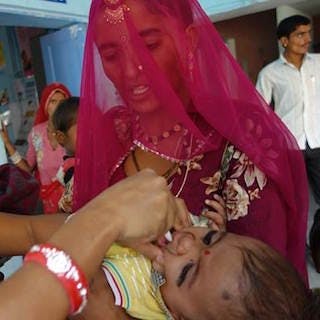Editor’s Note: This post is part of the blog series, “Her Goals: Our Future,” which highlights the connections between girls and women and the Sustainable Development Goals. Guest blogger views expressed here do not necessarily reflect the views of the UN Foundation.
When policymakers, health experts, corporate leaders, community advocates, and researchers meet for the Women Deliver conference this month to discuss the rights and well-being of women and girls, the work of Kiran Khatri must inform the conversation. Khatri is a nurse midwife. She and millions of others like her hold within their hands the ability to improve the health and well-being of mothers, babies, and families across the globe.

Nurse midwives, when empowered with skills and knowledge, are capable of delivering 87% of the sexual, reproductive, maternal, and newborn health service needs across the developing world.
They are a critical link in achieving Sustainable Development Goal 3 to “Ensure healthy lives and promote well-being for all at all ages.” Yet, glaring gaps exist in their availability.
In a country like India – with 1.2 billion people and 69% of its population living in villages – the need for a strong nurse midwifery workforce cannot be undervalued. Faced with a shortage of human resources for health, especially in the remote pockets of the country, nurse midwives are often shouldering the biggest responsibility of delivering quality reproductive, maternal, newborn, and child health services. These health providers overcome many odds – working in difficult conditions, in understaffed facilities with limited resources – in their efforts to save lives.
Nurse midwife Khatri is a fine example. She works at a remote community health center in village Bajju, 110 kilometers from Bikaner in the state of Rajasthan. Bajju’s community health center is the only public health facility serving the entire village and those who live within a 70 kilometer radius of it. Khatri is a one woman army. Often the only nurse on duty at this facility, she helps deliver babies, vaccinates children, attends to mothers following birth, provides family planning counseling, and does the official paperwork required of her with exemplary prowess. Her skills help her manage cases of severe bleeding after birth – one of the top causes of maternal deaths – and save newborns who are struggling to breath. Not only does Khatri’s work ensure quality health care services at the grassroots, it also frees the only doctor at this facility to focus on other needs, like conducting health check-ups and tending to the sick at the busy outpatient department, where he sees an average of 200 people daily.

India is making a concerted effort to build and support thousands of Kiran Khatris – through strengthening institutions that educate and train nurse midwifery students, revising the curricula to build skills and confidence in students, giving greater responsibilities to nurse midwives, and expanding their scope of work through task shifting, developing a career pathway, and ensuring representation of this cadre at the leadership and policy level.
Women like Kiran Khatri are inspirational. They are the backbone of a strong health care system and investing in them can catapult our health care agenda for women and girls toward success. It is time we throw the spotlight on them.
By Indrani Kashyap, Senior Communications Specialist in the India office of Jhpiego
[Photos: Jhpiego]

